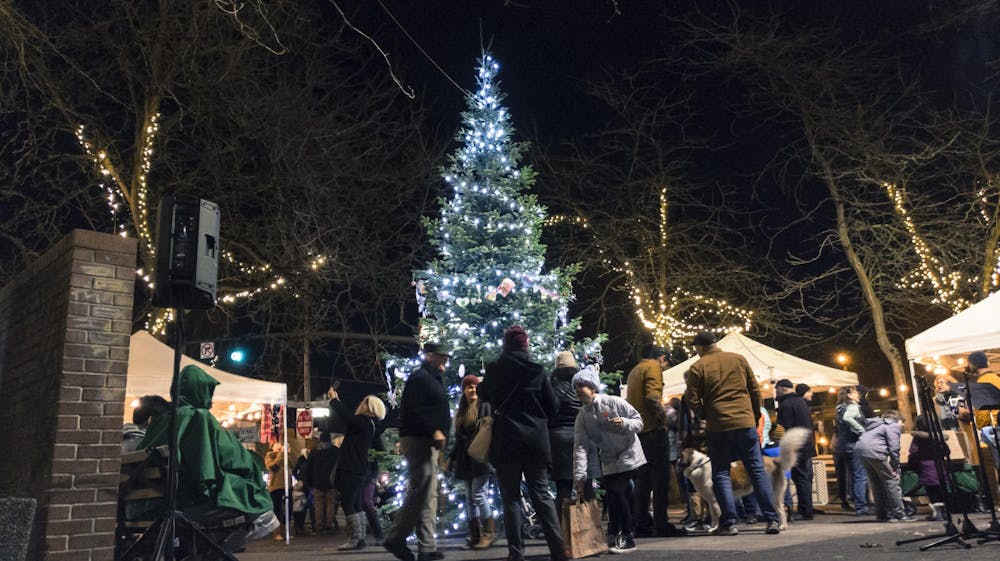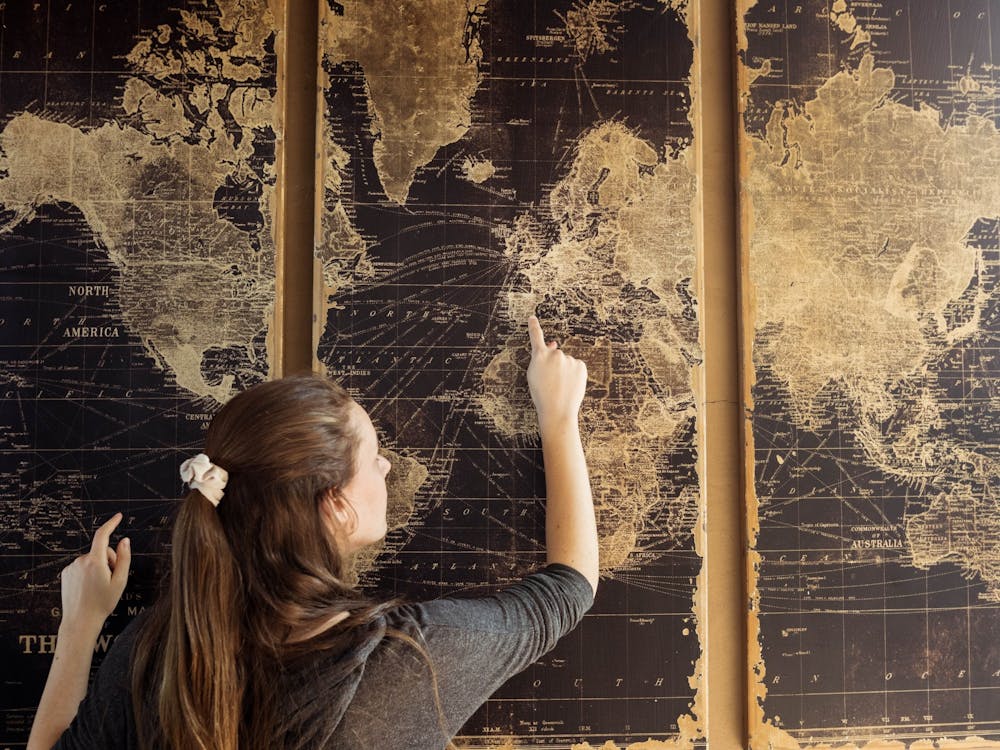Not everyone in the U.S. celebrates the holidays with the stereotypical turkey, mashed potatoes and cranberry sauce. For example, one year, my Romanian family had to bring the mashed potatoes to an American Thanksgiving, but we didn’t know what gravy was and that it accompanied mashed potatoes in the U.S. Imagine our confusion and embarrassment when the guests started asking us where the gravy was.
The Beacon sat down to talk to other students who don’t necessarily celebrate the holiday season and Christmas specifically with turkey and gravy (or who do, but also have other customs alongside it) to learn about more ways the holiday is celebrated.
Mindy Roces
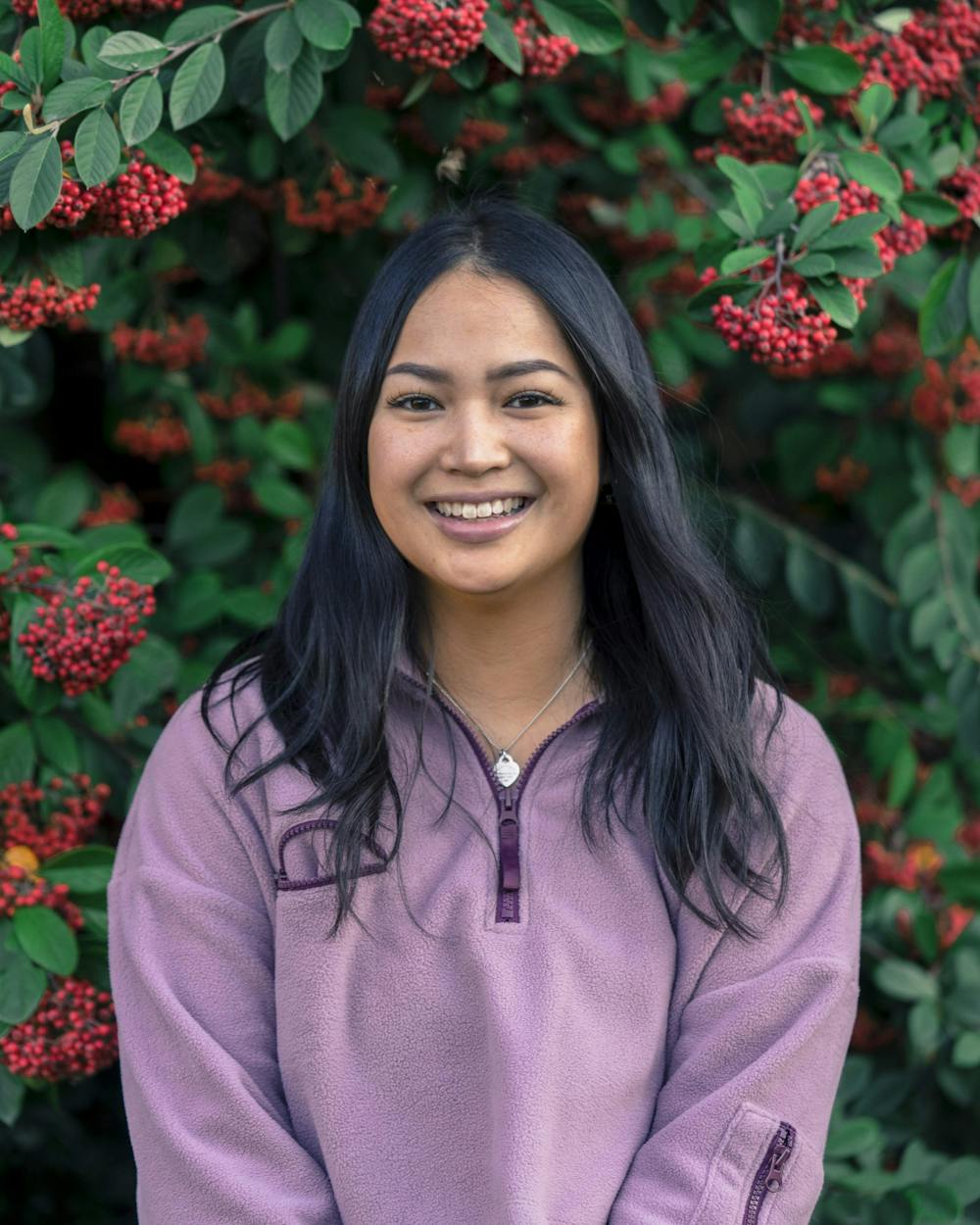
Mindy Roces, junior nursing major, celebrates a Filipino Christmas.
Junior nursing major Mindy Roces’ Christmas starts on the night of Dec. 24, with a midnight Mass followed by presents and a party from 1 a.m. to 3 a.m. The Mass is the last one in a series of nine Masses leading up to Christmas called Simbang Gabi, a Filipino tradition.
But the party in the early hours of Christmas Day is just the beginning. A few days later follows a Christmas party that her family spends the whole year planning, the highlights of which are a crab feed and a talent show.
“I think it is a bit of a Filipino thing, because whenever we have a family reunion, we do talent shows,” Roces said. “I sing, and they always have the kids sing a song. A lot of my little cousins, they’re put in piano lessons or whatever instruments they want to play, like violin, trumpet.”
After the talent show, they also play pabunot, a game in which the kids choose dollar bills of varying denominations rolled up in paper and taped to a piece of cardboard. She said that as the kids have grown up over the years, the party has become less elaborate, something she’s observed from watching home videos, but has become more meaningful for her, as she’s learned to appreciate her family and culture more.
“When I was younger, I mainly went to school with white people, so I used to be kind of ashamed of my culture and embarrassed just because it was so different from what all my friends did,” Roces said. “But now that I’ve been to college and there’s so much diversity here, I really embrace it and I’m proud that we have something special that we do.”
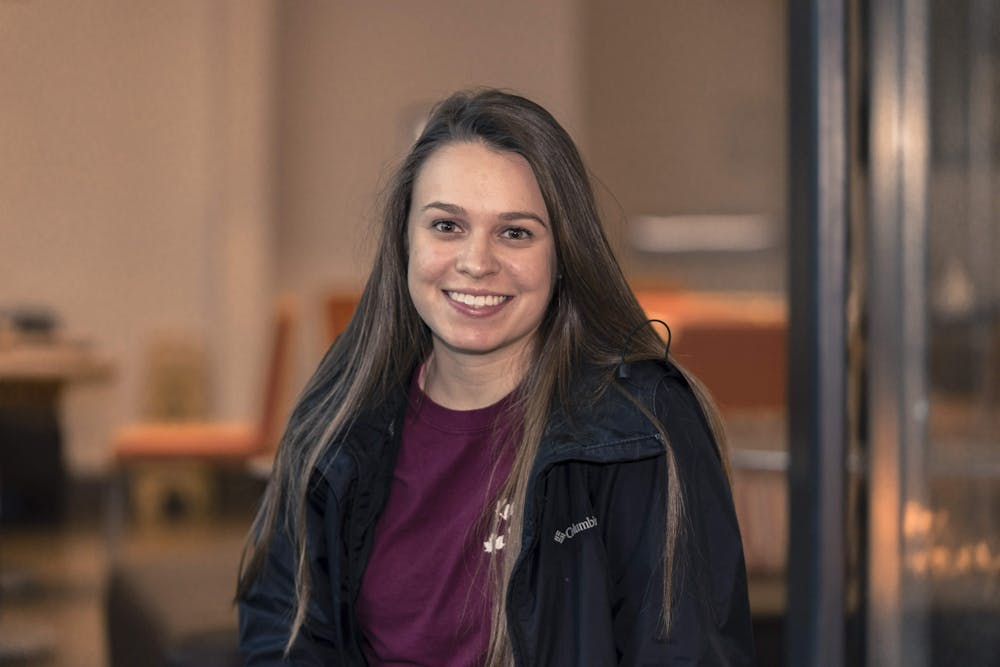
Mary Clyde, sophomore psychology major, celebrates a Venezuelan Christmas.
Mary Clyde
Sophomore psychology major Mary Clyde explained that when she celebrates Christmas with her mother’s family, turkey and mashed potatoes are nowhere to be found. Instead, they indulge in Venezuelan dishes, including hallacas, a cornmeal dough filled with meat, and pan de jamón, a bread with ham, raisins and olives.
“We’ll spend the whole day cooking, and everyone contributes,” Clyde said. “My favorite (Christmasses), I feel bad for saying this, are the ones with my mom’s side of the family. For me, they’re just a lot more joyful.”
They open presents at midnight on Dec. 24, and in her family, Christmas Day is characterized by music. They play Venezuelan songs, along with songs like “Jingle Bells,” on guitar, drums and the cuatro, a type of Venezuelan instrument similar to a ukulele. It’s her favorite part of the day, she noted.
Her family also celebrates on Jan. 6 for Día de los Reyes, Three Kings’ Day, with a special dinner and a smaller round of presents than on Christmas. Clyde also explained that these times are for family, as opposed to U.S. culture, where people may spend more time with their friends around the holiday season.
“In the Venezuelan culture, when it comes to Christmas and New Year’s, it’s for family,” Clyde said. “When I was in high school and New Year’s would come around and all my friends would be partying, I’d get kind of upset that I’d have to stay home for it. Now that I’m in college and I don’t spend that much time with them, I want to be with my family, and sometimes I feel bad for my friends who are partying.”
Anush Hakobyan
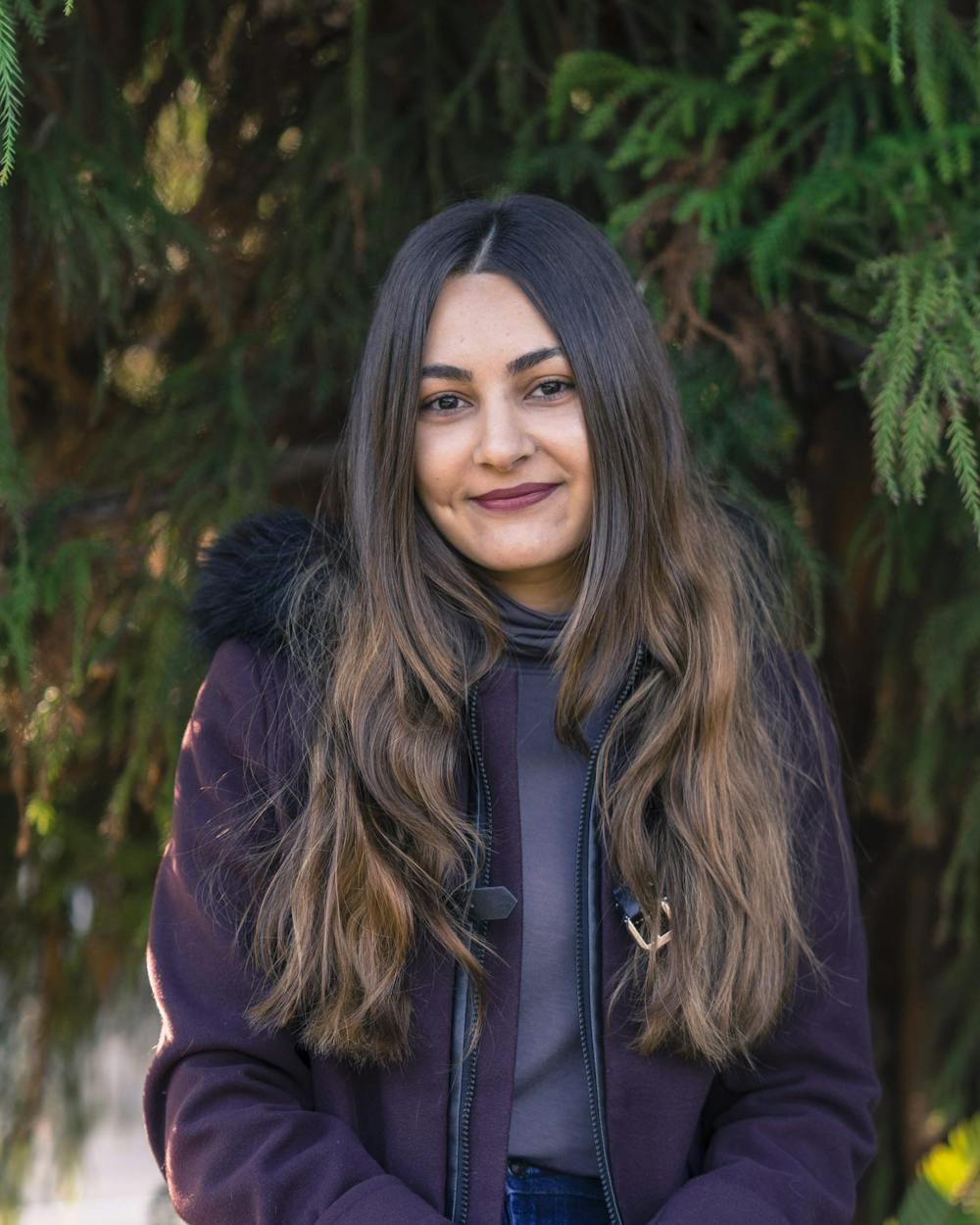
Anush Hakobyan, junior communications major, celebrates a shortened Armenian Christmas in the U.S.
Anush Hakobyan, who immigrated to the U.S. from Armenia three years ago, explained that from Dec. 31 to Jan. 13, there can’t be an inch of empty space on dinner tables because they have to be filled with food, ready for guests at all times. The two-week celebration includes New Year’s and Christmas, which is celebrated on Jan. 6.
“I love Christmas and New Year’s, those are my favorite holidays, and especially, celebrating in Armenia, that’s the best thing ever for me,” she said. “It’s about giving gifts to each other, spending time with your relatives and friends, and food.”
The junior communication studies major described the start of the “‘two-week party” as especially important, because Armenians believe that how you welcome the year foreshadows how you’ll spend the whole year, she said. Her family prepares dolmas, cabbage/grape leaves filled with meat and rice, and ishly kufta, a type of meatball with a coin hidden inside — whoever finds it is the lucky one for the year, she explained. Many Armenians also try to get away to the mountain town of Tsaghkadzor to enjoy the snow, she said.
In Vancouver, Wash., she spends the holidays with her parents and brother, as well as with their local Armenian church. She said in the U.S. they celebrate Christmas on Dec. 25 or close to it. The two-week celebration she was used to in Armenia is not possible, because of logistical concerns around vacation time, and wouldn’t be the same without her family and friends, she said.
“Here, people mostly get excited for Dec. 25, and I do get excited for that too, but I still miss having our two-week celebration,” Hakobyan said. “I wouldn’t say I feel left out as much (of American traditions) as it is just me missing (people and customs).”
Alexa Ruiz
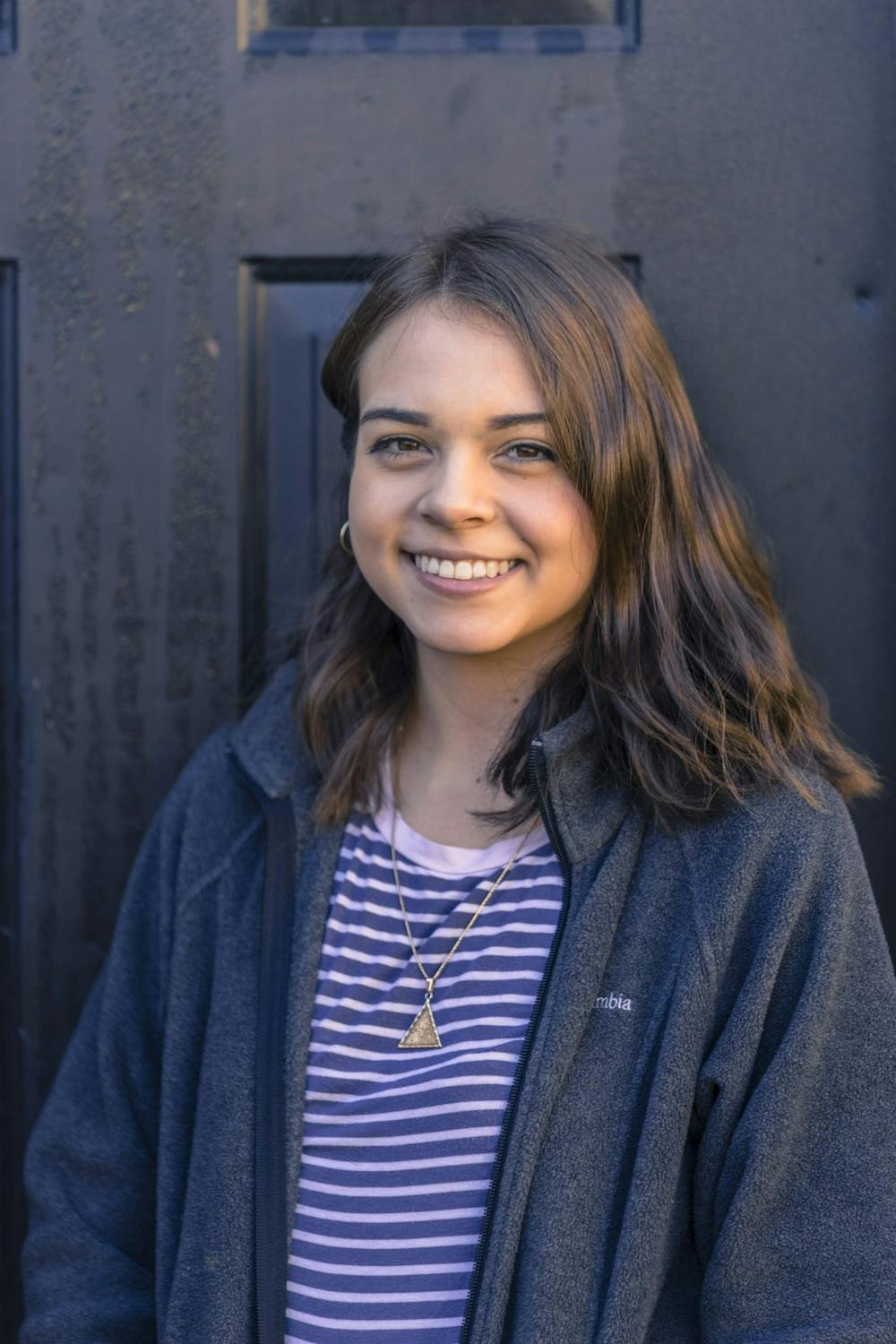
Alexa Ruiz is a senior computer science major from Modesto, CA where she and her family celebrate a Mexican Christmas.
For senior computer science major Alexa Ruiz, her holiday celebration used to begin with Las Posadas, a Mexican festival commemorating the journey of Mary and Joseph from Nazareth to Bethlehem. She explained that she has few relatives in the U.S. but that a handful of neighbors in her hometown of Modesto, California, would choose two children to act as Mary and Joseph and walk to a house to put on a slightly altered version of Las Posadas.
Now that the kids are older, her family doesn’t celebrate Las Posadas as much, but they still gather on Christmas Eve to eat tamales (Ruiz noted that it’s the only time of year her mother prepares tamales from scratch), posole, a Mexican soup or stew, buñuelos, a sweet fried dough, and corricos, crumbly cookies made out of cornflour. Christmas Day is a smaller celebration, she said, but her family eats leftover tamales and plays lotería, a Mexican game of chance.
A few weeks later, on Jan. 6, her family also celebrates Día de los Reyes. They eat rosca de reyes, an oval-shaped pastry, with small plastic babies hidden throughout. Whoever finds one is considered lucky — and in her family, also has to throw a tamale party next holiday season, she explained.
Ruiz said as she’s attended college, these celebrations have made returning to her family feel even more like home, though she’s always appreciated them.
“Growing up, the kids would be like, ‘I made a gingerbread house,’ and we never did things like that,” Ruiz said. “But I was never sad over the fact that someone else’s Christmas was different, because I loved my Christmas.”
Yurim Lee
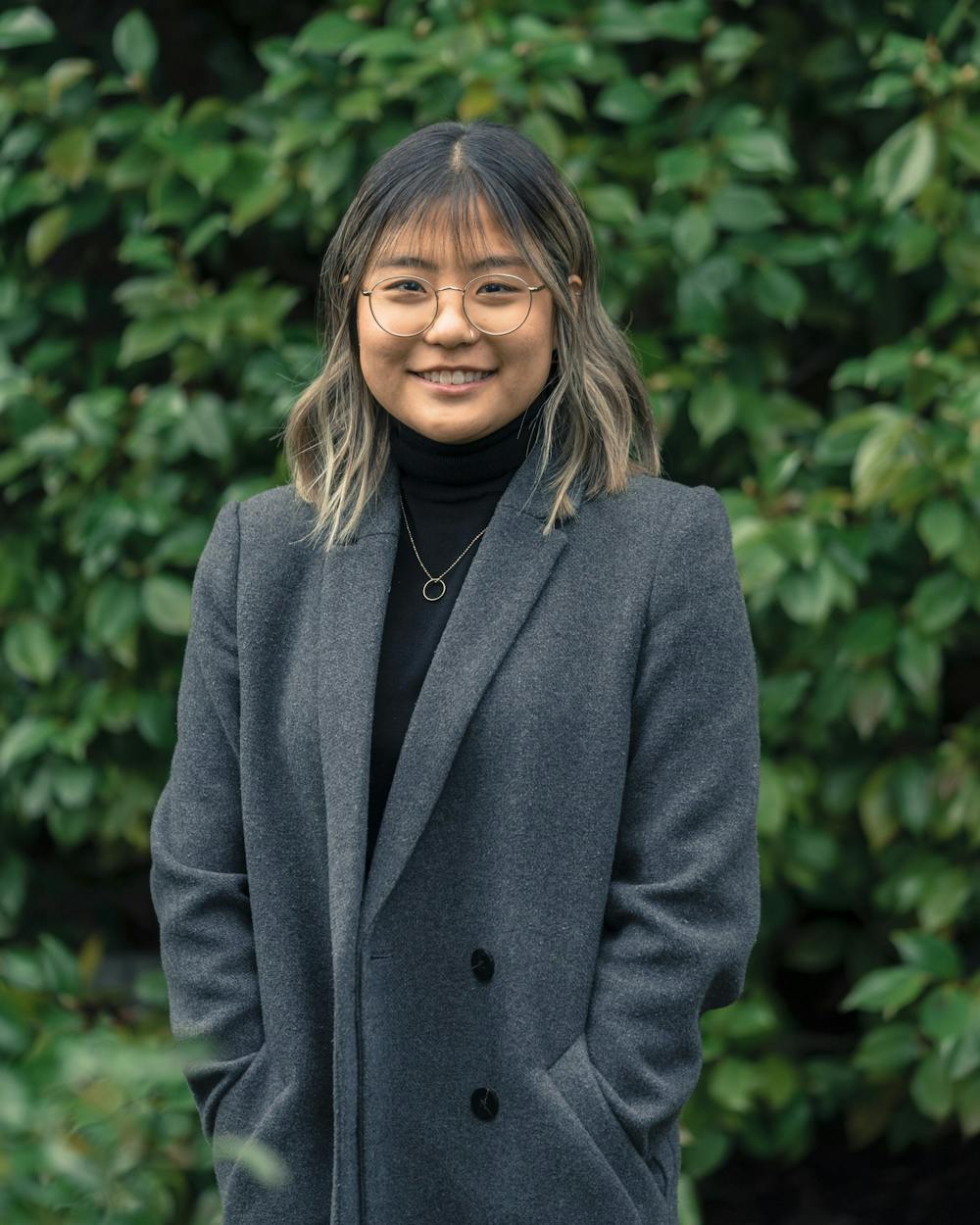
Yurim Lee is a senior electrical engineering major from Seoul, South Korea.
Yurim Lee, senior electrical engineering major and president of International Club, explained that in South Korea, Christmas has not traditionally been celebrated, but the influence of globalization and Western culture have popularized it. The streets of her hometown of Seoul are decorated with lights, Christmas trees and an ice rink in December, fixtures that wouldn’t have been there a few decades ago, she said.
While Christians in Korea do recognize the religious aspects of Christmas, most people who celebrate the holiday emphasize its more secular aspects, she explained. Christmas is also not necessarily understood as a time for family, she said.
“It’s kind of like Valentine’s Day actually, so you spend the time with your partner,” Lee said. “Christmas and all the Western culture celebrations are with your partner, so people see it as an opportunity to go on a date instead of spending it with family.”
And if you don’t have a partner? You participate in “solo Christmas” by spending the day with your friends. People exchange gifts, go out to eat and buy elaborately decorated Christmas cakes, Lee said. She also said she was always baffled by how Santa entered homes to drop off gifts in Korea, as most people live in apartments.
“My mom told me that Santa comes through the balcony and that he’ll just float through the window,” Lee said.
She also noted that in her experience, gift-giving in the U.S. seems to be more unidirectional, as in, children tend to not get their parents gifts. In Korea though, it’s typical for kids to get their parents a present as well, she said. One year, she gave her parents the gift of spending Christmas with her friends as a way to let her parents enjoy a child-free and proper Christmas.
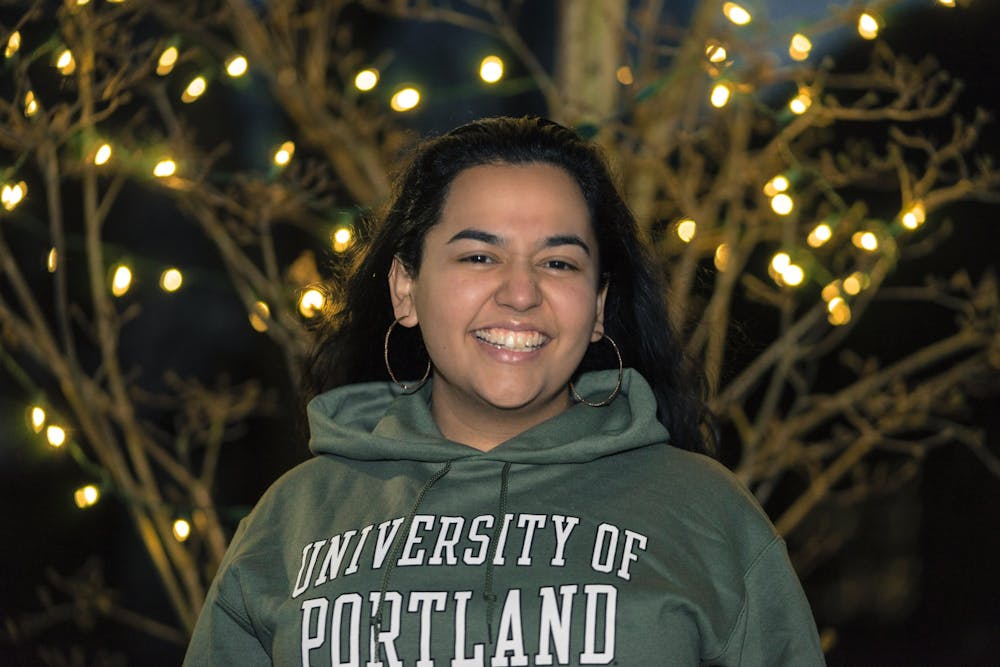
Angie Bustos, senior biology major, celebrates a Mexican and Colombian Christmas.
Angie Bustos
For senior biology major Angie Bustos, Christmas preparation starts at 10 a.m. on Dec. 24, in anticipation of Noche Buena that evening. Bustos, whose mother is Colombian and whose father is Mexican, explained that Noche Buena (literally, “the good night”), on Dec. 24, is a tradition in many Latino communities, and the night is “good” as people are awaiting the coming of Jesus.
“When I heard that people didn’t celebrate Christmas the night before, I was like, ‘What?!’ That was just odd for me,” Bustos said. “I never got that (anticipation) of running down the stairs Christmas morning.”
For Noche Buena, her mom prepares one Colombian and one Mexican dish. She usually makes Colombian tamales, which are banana leaves filled with meat and rice, and posole. For dessert, there’s Colombian natilla, a sweet custard with blackberry or some other sauce drizzled atop, ponche, an apple and guava drink spiced with cinnamon, and flan, a caramel custard.
Bustos concedes that she’s not the most helpful in the kitchen, so she helps in other ways, but explained that the most important part of the day is time spent with family. She has few relatives in the U.S. and remembers that when she was young, she and her mom would film their Christmas celebration to send to her family in Colombia. They would also send videos back, which Bustos only saw in the spring because of how long they took to arrive.
They stay up until midnight to open presents, but the party continues long after, sometimes until 4 a.m., she said. Last Christmas, the celebration was a bit bigger and more special than usual, she said. Her father had not seen his parents since immigrating to the U.S. from Mexico, but they were reunited in her living room last Christmas.
“It had been a good 20 years that he hadn’t seen his parents, but they were able to apply for a tourist visa. That was just great,” Bustos said.
Merel Jacobs
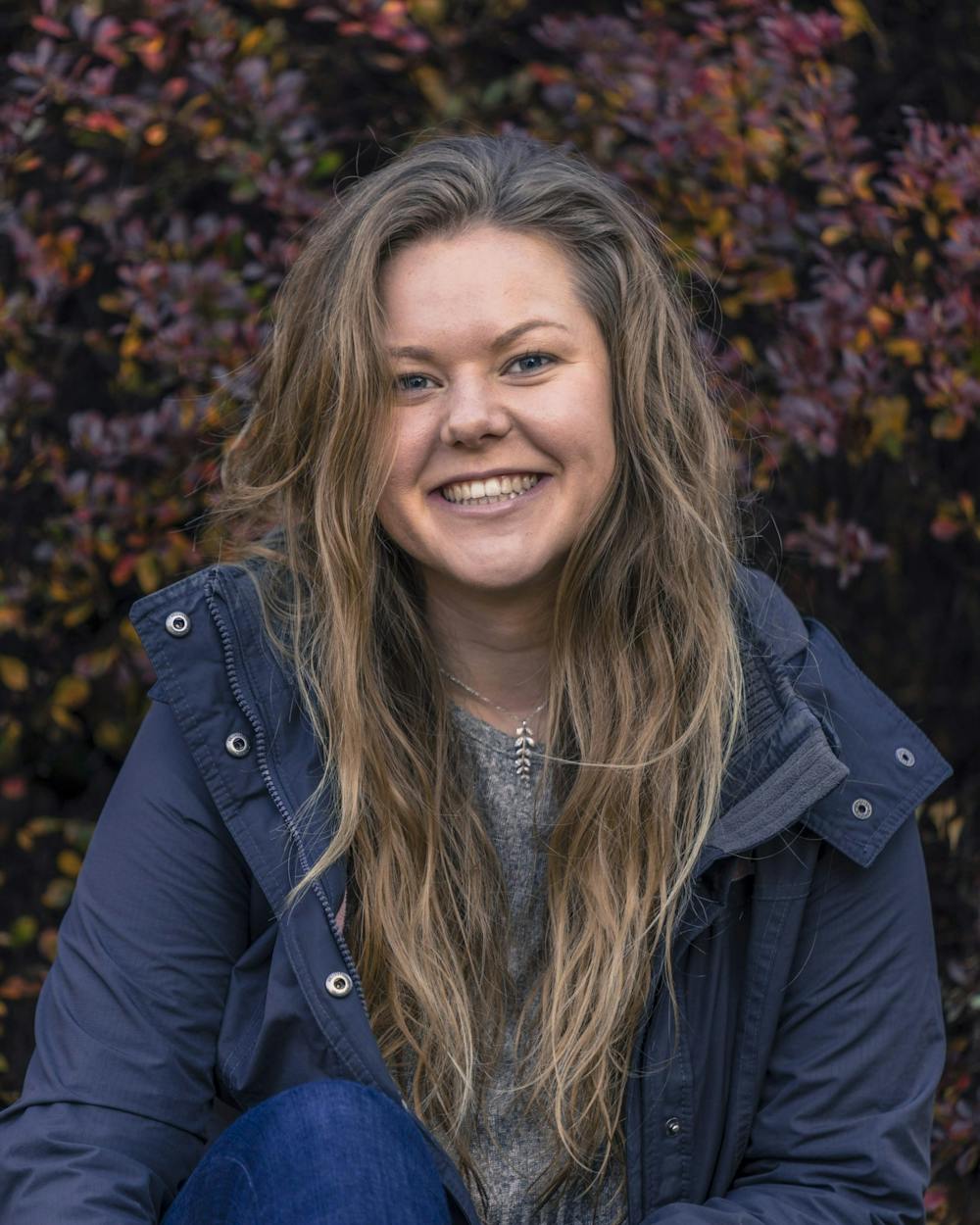
Junior psychology major, Merel Jacobs, celebrates a Dutch Christmas with American influences.
Merel Jacobs, a junior psychology major, begins the holiday season with the Dutch tradition of Sinterklaas, a figure who represents St. Nicholas. On Dec. 5, families leave their shoes by the door, and in the morning, they are filled with pepernoten (molasses cookies) and mandarin oranges, and children find a bag of toys at the door.
She explained that her parents had to get creative to deliver the cookies and toys without revealing that it was not Sinterklaas stopping by.
“You’ll hear a big bang at the door during dinner on the 5th, and then there’s a big bag of presents,” Jacobs said. “We would have the neighbors do it. And we had one neighbor who always wore all-white, so we thought he looked like one of the white horses that St. Nick rode.”
When Jacobs was 10 years old, her mom explained the truth about Sinterklaas (along with the Easter Bunny and similar figures). But she still had Christmas Day and New Year’s to look forward to. On Dec. 31, her family prepares oliebollen, a type of doughnut with raisins, and appelflappen, an apple fritter.
Jacobs’ family also took traditions from the U.S. to her father’s family in the Netherlands for one year. They had to navigate tiny kitchens, a lack of pecans and the difficulty of finding a whole turkey. Her family there has still kept the tradition.
“The Dutch are known for very small kitchens, refrigerators and ovens, but we made it work,” Jacobs said. “My family still does Thanksgiving every year even though we don’t go every year, so we have to mail them pecans and corn syrup.”
Dora Totoian
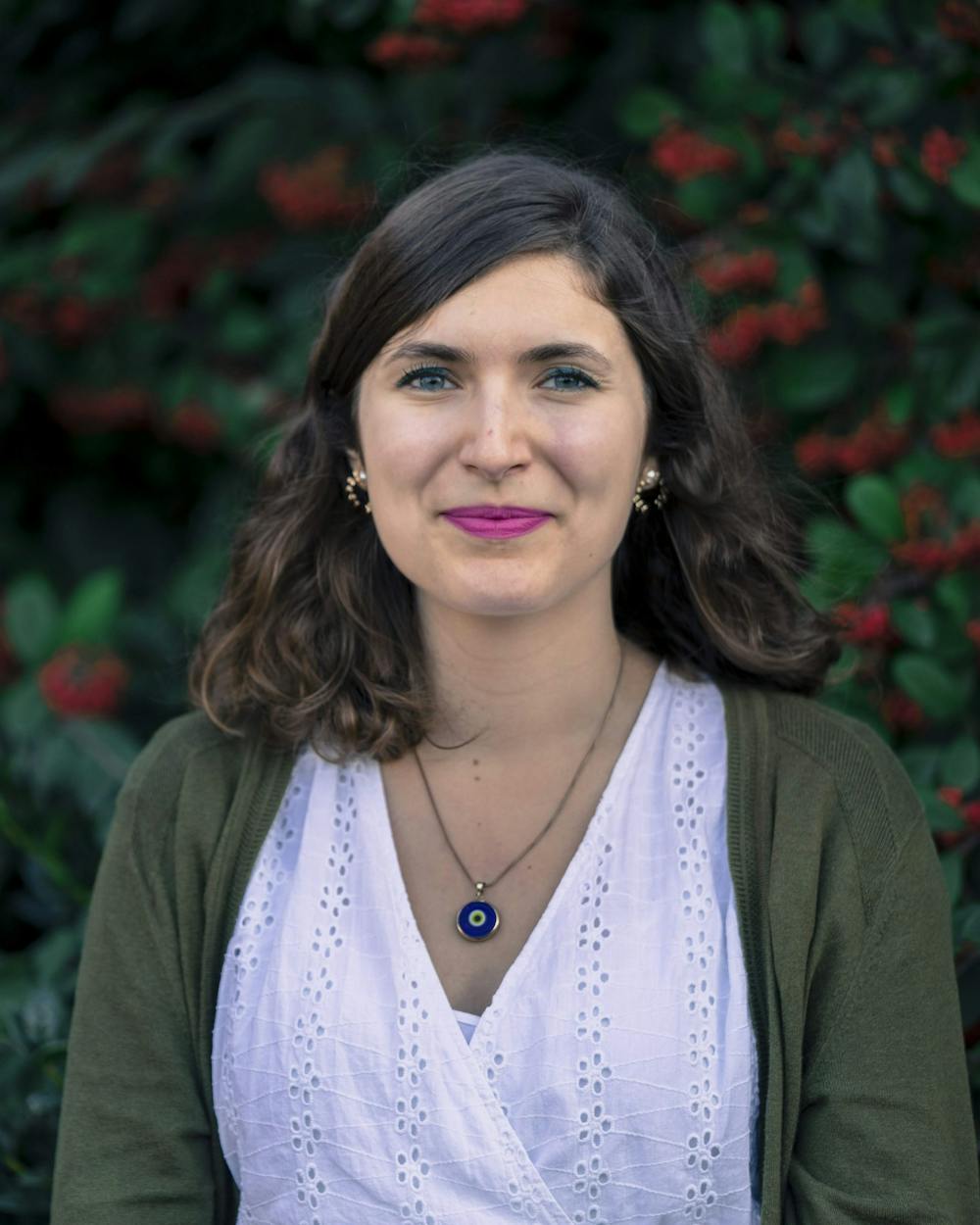
Dora Totoian celebrates a Romanian Christmas with hints of American influence.
As for me, I can also relate to not spending the holidays with your family, because most of mine still lives in Romania. But a visit from Moș Nicolae starts off the season on Dec. 5, our tree goes up a few days before Christmas (not the day after Thanksgiving) and remains well into January, I listen to American and Romanian Christmas carols, spend the days before Christmas rolling sarmale, and I eat my weight in cozonac.
My attempt to embrace an American tradition in second grade was also my first inkling that Santa was fake news.
After learning that American kids leave out milk and cookies for Santa, I also wanted to try it. I placed Fred Meyer chocolate chip cookies (Santa obviously needed American cookies, and my mom didn’t know how to make them) on the coffee table. After the presents arrived, the cookies were gone, and in their place was a typed note from Santa, telling me to thank the elves for their work.
Except that “elves” was spelled “elfs.” Hmmm, that seemed like an error I had heard my ESL mom make. Was Santa also an immigrant? Or … was Santa my mom?
While my family has figured out how to better incorporate a few American customs into our celebration (my mom’s creativity for the slightly creepy Elf on the Shelf is unparalleled), we’ll still keep our sarmale and pass on the gravy.
Dora Totoian is a reporter and the Opinion editor for The Beacon. She can be reached at totoian20@up.edu.



